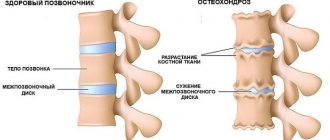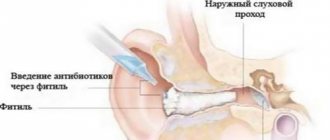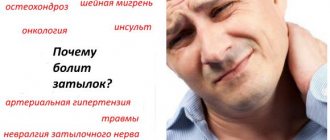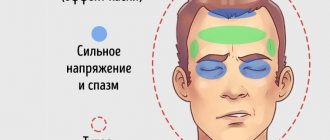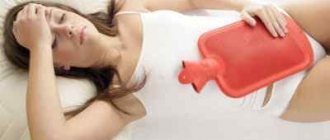Often, pain in the head on one side of the hemisphere indicates that a person is developing a migraine. In this regard, analgesics and analogues lose their properties when used for a long time. Then the pain gains strength and does not subside. If unexpected or unbearable discomfort occurs on the right side of the head, you should immediately consult a specialist. Migraine occurs in females due to genetic origin. It can be passed on through one generation or through a line. Men can also be susceptible to this disease, but according to statistics, such cases are quite rare.
Causes of headaches in the right hemisphere
Migraine is a disorder of brain function. Often pain sensations are one-sided and concentrated in the right hemisphere. In addition, the pain may have throbbing and even spasms. According to statistics, this disease is often observed in females, as it is inherited. The male population rarely falls under the influence of this disease. In addition to heredity, there are several other causes of pain in the right hemisphere of the brain, namely:
- Head injury. Painful sensations can be different in nature, localization and concentration. Pain will occur in the place where the blow occurred.
- Inflammatory process. Inflammation of the maxillary sinuses can also trigger headaches in the right hemisphere of the brain.
- Tumor in the brain. If a neoplasm of a malignant or benign nature develops and grows, then the person suddenly loses weight, dizziness, nausea, and vomiting appear. Pain in the right hemisphere of the head occurs in the morning, with increasing intensity. If there is severe, persistent discomfort in the right hemisphere of the brain, it is imperative to visit a specialist.
- Costain syndrome occurs with severe headaches in the right hemisphere of the brain, also affecting the temporal region and ears. The discomfort may increase during conversation or when opening the mouth. This is observed due to dysfunction of the temporomandibular joint.
- Inflammatory processes in the eye area. The main symptoms include dull unilateral pain in the temporal or ocular region.
- Bleeding inside the skull. This often occurs as a consequence of a severe concussion. The unpleasant sensations are strong and sharp, and increasing pain is possible. In addition to headaches, other symptoms are observed in the form of nausea, vomiting, temporary clouding of consciousness or loss of consciousness. If you treat each symptom separately, you will not be able to achieve one positive result. Consultation with a specialist is required, in some cases even hospitalization.
- Temporal arteritis. This pathological process can be attributed to the autoimmune group of diseases. It occurs in the form of inflammation in the area of medium and large arteries. After a specialist has made a diagnosis, it is necessary to begin treatment of the vascular system. This disease often affects older people. The main symptoms include pain in the head on the right side, insomnia, depression, and a reddish tint to the skin on the head. If not treated promptly, you can lose your vision.
If you do not treat the developing disease in a timely manner. If you experience prolonged pain, you need to visit a doctor, get a diagnosis done to identify the exact cause and begin a course of treatment. Thanks to consultation with a specialist, as well as examinations and tests, it is possible to prevent the development of an inflammatory or pathological process in time.
( Video : “Pain in the right temple - causes”)
Main symptoms of migraine
To find out how to treat such a disease, you need to make sure of the correct diagnosis. This can be done by identifying the main symptoms of migraine.
- First of all, strong, excruciating pain is noted. It is located in the region of the orbital-temporal part of the head.
- The onset of the disease is accompanied by a failure of the visual and sensory systems.
- In addition, nausea, vomiting, photophobia, and inability to tolerate sharp sounds appear. A person remains in bed most of the time, and the ability to lead a normal life, engage in normal activities and daily routines is reduced.
- The disease in question can appear in a person between the ages of 20 and 40. Migraine is considered the most important factor why a person is unable to work. Often such problems arise in women.
- You can add its location to the mandatory symptoms of migraine. Its peculiarity is that localization moves from the right to the left hemisphere of the brain and vice versa. Alternation occurs in case of an attack. If the location of pain changes in a short time, you can be calm, as this is not a sign of migraine.
( Video : “I will remove the headache in the temple area.”)
If pain is concentrated only on the right side of the brain, this is most likely a sign of an inflammatory process accompanied by some kind of pathology. For example, pain that resembles a migraine may be caused by a previous head injury. In any case, if you experience pain in a specific area of the head, you should visit a doctor.
Costen's syndrome
Infectious diseases, rheumatism and gout, joint trauma and other causes can lead to a disease of the temporomandibular joint called Costen syndrome.
Clinical manifestations are as follows: pain in one side of the head, in the ear and next to it, in the sinuses, a burning sensation appears on the tongue, dryness or increased salivation is observed in the mouth.
Radiography makes it possible to differentiate this disease from arthrosis and arthritis (acute and chronic). Treatment is bite correction and prosthetics.
Attacks of cluster pain
Cluster pain occurs due to a disease such as cluster cephalgia - this is Harris migraine neuralgia. It occurs with a certain frequency, unexpectedly for the patient, and its localization is in the orbit or its area.
The pain is quite intense, unbearable, bursting, burning, sharp, most patients feel as if their eyes are popping out of their sockets. The disease in question is localized in only one part of the brain and often this is the right hemisphere. In addition, the location of cluster pain can affect the frontotemporal part, cheekbones, and cervical region.
( Video : “Headache in the temples”)
When a person undergoes another attack, the skin on the face begins to turn red, capillaries in the eyes burst, which makes the eyes red, watery eyes and nasal congestion appear. The attacks are quite painful. Each person endures them individually, some cannot find a place for themselves, others sit quietly, curled up in a ball. Do not try to calm the patient down or help him, as this will only cause irritability and aggression. In the medical literature, several differences are distinguished between migrainous neuralgia of Harris and paroxysmal hemicrania. In the first case, pain occurs seasonally - often in spring or autumn, every day in several attacks lasting up to half an hour, in more rare and advanced cases up to several hours.
Intracranial bleeding
An intracranial hematoma develops as a result of bleeding from a burst vessel. This is most often the result of trauma, but can also result from a congenital malformation of a cerebral vessel or an aneurysm.
After the vessel bursts, the volume of the hematoma gradually increases and the pressure inside the skull increases. Therefore, after some time (from several hours to several days), neurological symptoms appear: lethargy, confusion, slow and often incorrect answers to questions, clarity of consciousness disappears, bradycardia develops, convulsions, vomiting and shooting pain, which can be noted only on one side head, temples.
Symptoms rapidly develop and increase; modern methods are used for diagnosis: MRI, x-ray examination of the skull. Urgent surgical intervention is indicated as treatment.
Treatment of right hemisphere headaches
To understand the cause of head pain, you need to visit a specialist. He can identify the main symptoms and conduct a complete diagnosis of the body in order to identify the factors causing pain in the right hemisphere of the brain. Each case has an individual approach. Many people get rid of headaches with the help of analgesics. However, this is only a temporary method, since it only treats the symptom and not the disease as a whole. In addition, there is a risk that the disease will become chronic. To prevent this, you need to visit a doctor. To establish an accurate diagnosis, a specialist may prescribe a full examination, namely the following procedures:
- Computed tomography using magnetic resonance;
- Ultrasound examination;
- Electrocardiography;
- Blood test - general and biochemical.
In addition, the doctor may also prescribe other laboratory tests if necessary. Treatment will depend on the identified disease factors. Often the pain goes away on its own, but relapse cannot be ruled out and in this case treatment is necessary. Headaches that are located on the right side of the head can be cured using several methods:
- For tension pain, analgesic medications are prescribed, which can also increase activity at the physical level.
- For osteochondrosis, special physical therapy is prescribed, as well as massage of the cervical region. To relieve acute pain, you can drink non-steroids as an anti-inflammatory drug or a warming ointment.
- If there is a concussion, the patient must remain in bed. A compress that resolves hematomas and painkillers will also not hurt.
- If intracranial bleeding occurs, the hematoma must be removed through surgery and the pathology itself is treated to avoid relapse.
- If you have diseases in the oral cavity, you should consult a dentist, since there is a possibility that the cause of the pain is a malocclusion or the teeth themselves.
- An otolaryngological disease can only go away if the underlying causes are eliminated.
- Any tumor must be eliminated with surgery. The method of therapy can be determined by the nature of the tumor. Laser excision, chemotherapy, radiation therapy and other methods are also used.
- With depression, similar symptoms can also occur; to do this, you just need to take a rest, breathe correctly, to restore calm. This can be done using auto-training, meditation or another relaxing method.
Without eliminating the main factor, it will be quite difficult to get rid of the present symptoms. In any case, you will definitely need to consult a doctor.
Cervical osteochondrosis
This disease affects the intervertebral discs in the cervical region and usually affects people over 35 years of age who lead a sedentary lifestyle and do not follow the principles of a healthy diet.
A constant companion of the disease is headache. It intensifies with any turn of the eyes and does not respond to analgesic medications. Whether the left side of the head or the right side hurts. Because the discomfort is often localized on only one side, it is called a “cervical migraine.”
With osteochondrosis, pain is relieved with massage and warming ointments applied to the cervical spine. In an acute condition, you should take a horizontal position if possible. Pay special attention to treating the underlying disease, only then will the pain arising on the right side of the brain go away.
Basic preventive measures
To avoid the risk of headaches on the right side, it is necessary to regularly perform preventive measures, namely:
- Eat properly. Do not eat fried, fatty, spicy foods. Eat more beans, vegetables, fruits.
- Get rid of alcohol and nicotine. Headaches are often caused by regular smoking.
- For migraines, it is not recommended to use triggers that contribute to their occurrence. This group includes chocolate, cheese, coffee, and smoked products.
- Do more physical activity, walk a lot in the fresh air, swim in the sea, in the pool.
Be sure to visit a doctor for advice if the right side of your head hurts and other symptoms appear.
Diagnostic methods
Quite often there are cases when the disease quickly develops into a severe chronic form. With constant intense cephalalgia, standard painkillers will eventually be powerless.
You may need a referral to appropriate specialists - a neuro-ophthalmologist, vertebroneurologist, neurosurgeon, psychiatrist and others.
| Analysis | Description |
| Complete blood count (OAK) | Checking for leukocytosis |
| Essential thrombocythemia | Study of hypercoagulable state |
| Blood chemistry | Renal and liver function indicators |
| Erythrocyte sedimentation rate (ESR) and C-reactive protein (CRP) | Determination of diseases in case of suspected giant cell arteritis, malignant neoplasms |
| Increased prothrombin time (PT) and partial thromboplastin time (PTT) | Evidence of hemorrhagic diathesis leading to intracranial hemorrhage |
| Thyroid function indicators | The presence of the disease can lead to headaches, being a migraine trigger |
| Hypercoagulability profile | Prescribed for suspected cerebral vein thrombosis and in all patients under 50 years of age with suspected TIA (new headache with transient neurological deficit) |
| Arterial blood gas composition | Checking for hypoxia |
| Drug screening | Intoxication can cause intracranial hemorrhage or cerebral ischemia |
| Urine examination | Detection of indicators for nephrotic syndrome, signs of infection (microorganisms and white blood cells), signs of peripheral embolism (red blood cell count) or use of narcotic or analgesic drugs. |
What to do if you have a headache on the right side
Rest and a moistened towel on your forehead are some of the simplest yet effective ways to get rid of headaches on the right side. A gentle massage of the temples and the area at the back of the head may also help.
Over-the-counter painkillers that are most recommended by doctors can help relieve tension headaches:
- Acetylsalicylic acid (Aspirin);
- Ibuprofen (Nurofen, Ibalgin, Brufen);
- Paracetamol (Paralen, Panadol).
But in case of a migraine attack, these medications will only help temporarily or not at all. Proper treatment for migraines is to use medications at the first sign of an aura or pain attack. Antimigraine drugs are designed to suppress the attack itself and all accompanying symptoms (vomiting, nausea, etc.) as quickly as possible. At the same time, they should have minimal side effects and work well in case of long-term use.
Significant progress was achieved by the discovery of a new type of medicine, triptans. Today they are the most effective therapeutic group and form the basis of migraine treatment. Triptans are available as tablets, subcutaneous injections, and nasal sprays.

